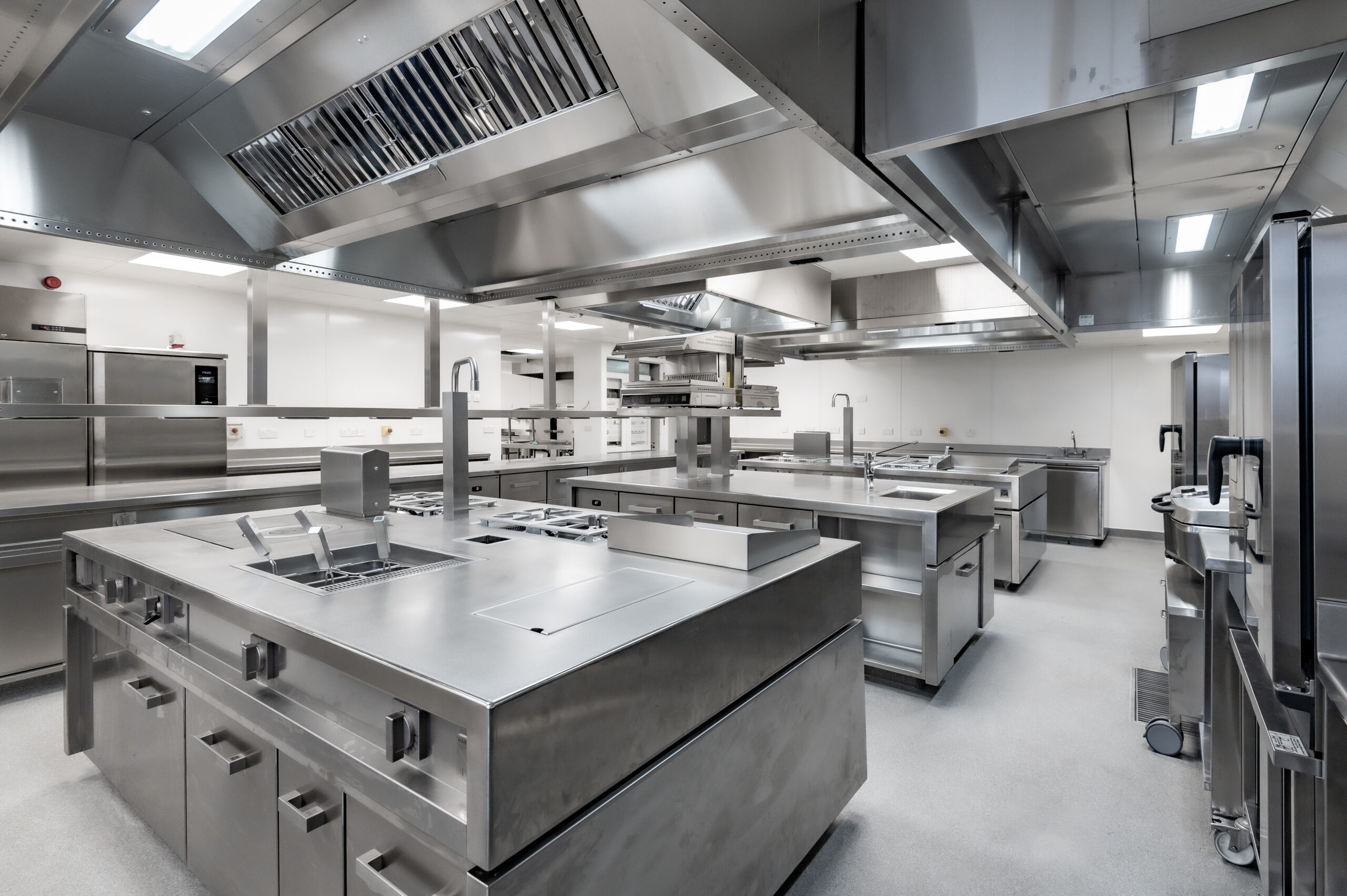Designing Commercial Kitchens: Efficiency, Functionality & Aesthetics
A well-designed commercial kitchen is the heart of any foodservice operation. It must be efficient, functional, and aesthetically pleasing to meet the demands of a busy environment. Here are some key considerations for designing commercial kitchens:
Layout and Workflow
- Efficiency: Optimise the layout to minimize movement and maximize productivity.
- Workflow: Consider the flow of food preparation, cooking, and service to ensure a smooth operation.
- Storage: Provide ample storage space for ingredients, equipment, and supplies.
Equipment Selection
- Needs Assessment: Choose equipment that aligns with your menu and cooking style.
- Durability: Invest in high-quality equipment that is built to last.
- Energy Efficiency: Consider energy-efficient options to reduce operating costs.
Ventilation and HVAC
- Air Quality: Ensure proper ventilation to remove smoke, odors, and grease.
- Temperature Control: Maintain a comfortable working environment with effective HVAC systems.
Safety and Sanitation
- Compliance: Adhere to local health and safety regulations.
- Sanitation: Design the kitchen for easy cleaning and sanitisation.
- Ergonomics: Consider ergonomic factors to prevent injuries and fatigue.
Aesthetics
- Branding: Create a visually appealing space that reflects your brand identity.
- Lighting: Use adequate lighting to ensure a bright and welcoming environment.
- Materials: Choose durable and easy-to-clean materials for walls, floors, and countertops.
By carefully considering these factors, you can design a commercial kitchen that is both functional and inviting.
Product Support Case Studies








